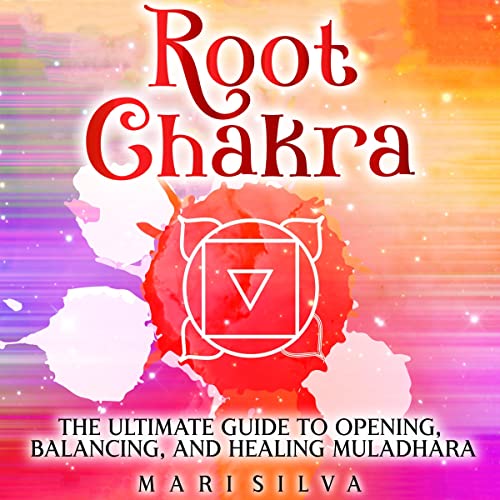In the realm of spiritual and energy-based practices, the concept of chakras has held a significant place for centuries. This post explains the root chakra meaning, which is the first chakra in a human body.
The seven energy centers govern various aspects of human life, and among them, the root chakra, or Muladhara, stands as the foundation upon which the rest of the chakra system is built.

Situated at the base of the spine, the root chakra is associated with feelings of stability, security, and a connection to the physical world.
In this article, we delve into the intricacies of the root chakra, exploring its attributes, significance, and methods to balance and activate it. For a brief description of all the chakras, you may refer to this article on seven chakras.
Understanding the Root Chakra
The root chakra, often represented by the color red, is the first of the seven major chakras in the human body according to many Eastern spiritual traditions, including Hinduism and Buddhism.
Its location at the base of the spine and its connection to the element of Earth emphasize its grounding and foundational qualities. The term “Muladhara” itself comes from Sanskrit words “mula,” meaning root, and “adhara,” meaning support or base.
The Attributes and Associations of the Root Chakra
The root chakra influences a range of attributes to do with a sense of stability, security, and connection to the physical world. Some of the key associations include:
- Physical Body and Health: This chakra has to do with the physical body’s well-being and vitality. A balanced root chakra supports overall health and vitality by enhancing the body’s ability to harness and maintain energy.
- Grounding and Stability: Some call the root chakra “the grounding chakra”, as it is responsible for creating a strong connection between an individual and the Earth. This connection promotes a sense of stability, helping individuals navigate life’s challenges with a solid foundation. A good book to read about grounding is this one.
- Security and Safety: Feelings of safety, security, and a sense of belonging come the root chakra. A balanced root chakra fosters a feeling of being secure in one’s environment and relationships.
- Survival Instincts: This chakra influences basic survival instincts, including the fight-or-flight response. It plays a role in assessing threats and reacting appropriately to them.
- Manifestation and Materialization: The root chakra’s connection to the physical world extends to the realm of materialization. It plays a role in an individual’s ability to manifest their desires and bring them into reality. Read an important Inner Circle article on manifestation here.
Signs of Imbalance of the Root Chakra
When the root chakra is imbalanced, it can lead to various physical, emotional, and psychological issues. Some common signs of an imbalanced root chakra include:
- Anxiety and Fear: Excessive fear, anxiety, and insecurity can indicate an imbalance in the root chakra.
- Physical Discomfort: Problems with the legs, lower back, feet, and digestive system may arise when this chakra is not functioning harmoniously.
- Financial Issues: An imbalanced root chakra might contribute to financial difficulties and challenges related to stability and security.
- Feeling Disconnected: A lack of connection to the physical world and a sense of rootlessness can stem from root chakra imbalances.
- Lack of Confidence: Difficulties in feeling confident, grounded, and capable may be linked to issues within the root chakra.
Balancing and Activating the Root Chakra
For the root chakra meaning post, it’s important to discuss how to balance this energy center.
Balancing and activating the root chakra is essential for overall well-being, because it forms the base upon which the entire chakra system functions. Various practices can help realign and harmonize the root chakra:
- Grounding Exercises: Engage in grounding exercises such as walking barefoot on natural surfaces or spending time in nature. Practice mindfulness to establish a stronger connection with the Earth.
- Physical Activity: Regular physical exercise, particularly those that focus on the lower body, can stimulate the root chakra and promote energy flow.
- Nutrition: Consuming root vegetables like carrots, potatoes, and beets, as well as protein-rich foods, can provide nourishment to the root chakra.
- Color Therapy: Surround yourself with the color red, either through clothing, décor, or visualization, to help stimulate and balance the root chakra.
- Meditation: Guided or self-guided meditation that emphasizes grounding and security can be effective in restoring balance to the root chakra.
- Affirmations: Repeat affirmations that focus on feelings of security, stability, and connection to strengthen the root chakra.
- Aromatherapy: Use grounding essential oils such as patchouli, cedarwood, and vetiver to support the root chakra’s balance.
- Crystals: Crystals like red jasper, black tourmaline, and garnet are believed to have a positive impact on the root chakra when used in meditation or carried as personal talismans.
The Root Chakra Symbol Meaning

The symbol of the root chakra consists of a red, four-petaled lotus flower surrounded by a square with four corners.
Here’s an explanation of its components and their meanings:
- Red Color: The color red is closely linked with the root chakra. It represents the energy of survival, vitality, and life force. Red also symbolizes the connection to the physical world and the foundation.
- Lotus Flower: The four-petaled lotus flower represents the root chakra itself. The lotus is a sacred symbol in many spiritual traditions and signifies purity, growth, and transformation. In the context of the root chakra, the lotus represents growth emerging from the depths.
- Square: The square that surrounds the lotus flower is often associated with stability, security, and a sense of being grounded. It represents the stable foundation upon which we build our lives and experiences. The square symbolizes the rootedness and support that the root chakra provides.
The Summary
In conclusion, the root chakra meaning article explains that the first chakra serves as the fundamental anchor of the human energy system, It provides stability, security, and a connection to the physical world.
Its influence over various aspects of human life underscores its significance in maintaining overall well-being. By engaging in practices that promote balance and activation of the root chakra, individuals can cultivate a strong foundation upon which to build a fulfilling and grounded existence.
Recommended Reading:




References
- Judith, A. Eastern Body, Western Mind: Psychology and the Chakra System As a Path to the Self.
- Dale, C. The Subtle Body: An Encyclopedia of Your Energetic Anatomy.
- Khalsa, G. S. The Kundalini Yoga Experience: Bringing Body, Mind, and Spirit Together.
- Wauters, A. Chakras and Their Archetypes: Uniting Energy Awareness and Spiritual Growth.
- Brown, C. The Yoga Bible.









